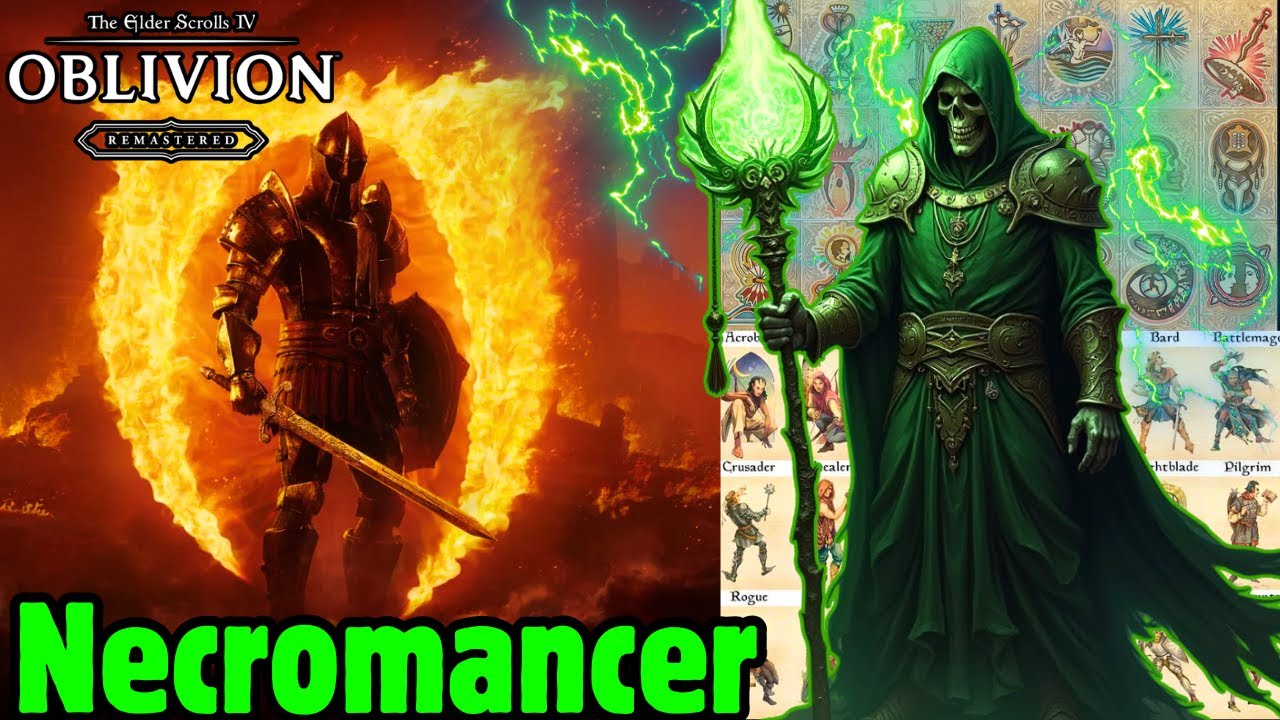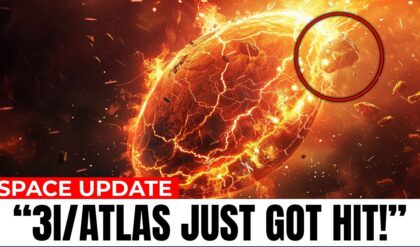SUPER OP Necromancer Death Mage Build Guide for Oblivion Remastered
The Elder Scrolls IV: Oblivion Remastered has reignited players’ passion for the sprawling world of Cyrodiil, and among the myriad ways to conquer its challenges, the Necromancer Death Mage build stands out as a devastatingly powerful option. This SUPER OP build, centered on summoning undead minions, wielding dark magic, and dominating the battlefield, is perfect for those who crave a blend of raw power and strategic depth. Drawing on insights from recent guides and community discussions, this guide will walk you through crafting an unstoppable Necromancer Death Mage in Oblivion Remastered, complete with race, birthsign, skills, spells, equipment, and tips to maximize your destructive potential. Ready to raise the dead and crush your foes? Let’s dive in!

Why Choose a Necromancer Death Mage Build?
The Necromancer in Oblivion Remastered is a high-damage spellcaster who specializes in Conjuration to summon undead allies and Destruction to unleash deadly magic. Unlike traditional mages, this build thrives on controlling the battlefield through minions while dealing devastating blows with spells like Damage Health and Drain Life. The Death Mage archetype leans into the darker, more thematic elements of necromancy, avoiding flashy elemental spells in favor of grim, life-sapping magic. With the game’s revamped spellcasting mechanics and graphical overhauls, there’s never been a better time to embrace this “glass cannon” playstyle, which balances immense power with vulnerability. This build is ideal for players who enjoy role-playing a morally ambiguous mage, defying the Mages Guild’s ban on necromancy, and dominating Cyrodiil with an army of the undead.
Character Creation: Race, Birthsign, and Class
To create a SUPER OP Necromancer Death Mage, your character creation choices are critical for maximizing Magicka and spellcasting effectiveness.
Race: Breton
The Breton race is the optimal choice for this build due to its magical affinity and defensive bonuses, which mitigate the Necromancer’s squishy nature. Bretons gain a +50 Magicka bonus, 50% Magic Resistance, and the Dragon Skin ability, which boosts armor rating by 50 for 60 seconds once daily. Their +10 boosts to Intelligence and Willpower enhance spell power and Magicka regeneration, while the absence of a Strength penalty (unlike High Elves) ensures decent carrying capacity for loot. The Breton’s magical resistance is particularly valuable against enemy spellcasters, a common threat in necromancer-heavy dungeons like Howling Cave. For role-playing, the Breton’s elven ancestry aligns with the mystical, forbidden allure of necromancy.
Birthsign: The Mage
For a balanced, beginner-friendly build, The Mage birthsign is the best choice, granting a +50 Magicka bonus without drawbacks. This boosts your spellcasting capacity early on, crucial for summoning and offensive spells. While The Apprentice (+100 Magicka, 100% magic vulnerability) offers more power, it’s riskier due to the Breton’s already high magic resistance negating only half the debuff. The Atronach (+150 Magicka, 50% spell absorption, no Magicka regeneration) is tempting for veterans but requires reliance on potions or spell absorption, which can be cumbersome for new players. The Mage provides a safe, reliable foundation for a Death Mage.
Class: Custom Necromancer
Creating a custom class allows you to tailor your Major Skills for optimal performance. Choose the Magic Specialization to boost spellcasting efficiency, with Intelligence and Willpower as Favored Attributes to maximize Magicka and regeneration. The following Major Skills form the core of the build:
Conjuration: Essential for summoning undead like skeletons, zombies, and wraiths. Focus on training with Sulinus Vassinus in Skingrad or Olyn Seran at Molag Bal’s Shrine to unlock powerful summons early.
Destruction: Your primary damage source, using spells like Damage Health, Drain Life, and Drain Magicka to sap enemies. Prioritize training with Destruction trainers like Delphine Jend in Bravil.
Alteration: Provides utility spells like Shield and Open Lock, enhancing survivability and exploration. Train with Deetsan in Cheydinhal or Tooth-in-the-Sea near Bravil.
Restoration: Critical for healing and fortifying summons or yourself with spells like Fortify Magicka. Use as a Major Skill to boost early progression, training with Cirroc in Bruma.
Mysticism: Offers Absorb Health and Detect Life, perfect for draining enemies and spotting threats. Train with Ita Rienus in Bravil.
Illusion: Enables crowd control with Paralyze and Charm, ideal for managing groups. Train with Martina Floria in Chorrol.
Blade: A backup skill for role-playing a necromancer who wields a poisoned dagger to “prepare” bodies for raising. Choose Blade to control leveling, as it’s rarely used, ensuring you gain optimal attribute bonuses without rapid level-ups.
This custom class balances offensive power, utility, and survivability, with Blade as a strategic choice to slow leveling for better attribute gains, as leveling too quickly can weaken your character in Oblivion’s quirky system.
Key Spells and Playstyle
The Necromancer Death Mage thrives on summoning undead to tank damage while you unleash dark magic from a distance. Here’s a breakdown of essential spells and how to use them:
Conjuration Spells:
Summon Skeleton/Headless Zombie: Early-game summons to distract enemies. Available from Mages Guild vendors like Alberic Litte in Chorrol.
Summon Wraith: A late-game powerhouse, ideal for tough fights. Purchase from Athragar in Chorrol after reaching Expert Conjuration.
Staff of Worms: Obtained during the Mages Guild questline, this artifact raises dead enemies as temporary allies, perfect for necromantic role-playing. Use it to reanimate foes repeatedly, though Oblivion Remastered patches prevent exploiting multiple Necromancer’s Amulets.
Destruction Spells:
Damage Health: A core spell for direct damage, ignoring armor. Upgrade to Wither or Corrode as you progress, available from Delphine Jend.
Drain Life/Health: Drains enemy health to heal you, ideal for sustaining in combat. Purchase from Volanaro in Bruma.
Drain Magicka: Cripples enemy spellcasters, found at the Leyawiin Mages Guild.
Mysticism Spells:
Absorb Health: Steals health from enemies, complementing Drain Life. Available from Thaurron in Anvil.
Detect Life: Reveals enemies, preventing ambushes in dungeons like Dark Fissure. Purchase from Edgar Vautrine in the Imperial City.
Alteration Spells:
Shield: Boosts armor rating, mitigating your squishy nature. Buy from Sulinus Vassinus in Skingrad.
Open Lock: Simplifies exploration, found at the Bravil Mages Guild.
Restoration Spells:
Heal Minor Wounds: Your starting spell, upgraded to Restore Health at the Leyawiin Mages Guild.
Fortify Magicka: Increases spellcasting capacity, available from Raminus Polus at the Arcane University.
Illusion Spells:
Paralyze: Freezes enemies, allowing you to focus on their summons or land heavy spells. Purchase from Martina Floria in Chorrol.
Silence: Neutralizes enemy mages, found at the Anvil Mages Guild.
Playstyle Tips:
Open combat with a summon to draw aggro, then cast Detect Life to scout enemies.
Use Paralyze or Silence to disable threats, followed by Damage Health or Absorb Health for damage.
Maintain distance to avoid melee attacks, using Shield spells for protection.
In groups, draw necromancers one at a time with a ranged spell, as their summons can overwhelm you. Sneak attacks with a dagger can one-shot unarmored necromancers if you invest in Sneak as a minor skill.
Reanimate fallen enemies with the Staff of Worms to bolster your forces, creating a thematic “army of the dead.”
Equipment: Armor, Weapons, and Enchantments
As a Necromancer Death Mage, your gear enhances your magical prowess and survivability.
Armor: Stick to Light Armor or Robes to avoid spellcasting penalties from Heavy Armor. The Shrouded Armor, obtained through the Dark Brotherhood questline, is ideal for its stealth boosts and poison resistance, enhancing your dagger backup and necromantic aesthetic. Alternatively, the Elven Armor cuirass and boots, looted from Azani Blackheart in the Fighters Guild questline, offer balanced protection for early to mid-game. Enchant robes with Fortify Magicka or Resist Magic using soul gems at the Arcane University.
Weapons: A Dagger (e.g., Elven or Glass) serves as a thematic backup, enchanted with Drain Health or Poison for role-playing a necromancer preparing bodies for raising. The Paralysis Staff, available from Mages Guild vendors, stuns melee enemies, giving you time to cast.
Accessories: The Mundane Ring (35% Spell Reflect, 50% Magic Resist) from random loot or dungeons, combined with Breton’s resistance, nearly nullifies magic damage. The Necromancer’s Amulet, obtained during the Mages Guild quest, boosts Magicka but disappears unless retrieved from the Arch-Mage’s Night Stand after becoming Arch-Mage.
Leveling and Progression
Oblivion Remastered’s updated leveling system allows you to choose Major Attributes without worrying about “broken” skill progression, unlike the original game. Focus on Intelligence to increase Magicka and spell damage, and Willpower for faster Magicka regeneration. Use trainers to boost Conjuration and Destruction early, as these skills don’t level naturally while exploring. Avoid spamming low-cost spells to prevent rapid leveling, which can outpace your combat readiness. Instead, practice skills organically through combat and quests.
Join the Mages Guild to access the Arcane University for spell creation and enchanting. Complete the questline to confront Mannimarco in Echo Cave, earning the Arch-Mage rank and access to the Necromancer’s Amulet. Avoid wearing Necromancer’s Robes in Mages Guild halls to prevent hostility, but equip them in dungeons for role-playing. The Staff of Corruption from Daedric quests can summon a shadow clone, complementing your undead army, though it doesn’t count toward the one-minion limit.
Role-Playing and Challenges
For immersion, align with the Necromancers Cult by avoiding Mages Guild hostility until you’ve secured key spells. Use the Staff of Worms to reanimate foes, embodying the Death Mage’s dark aesthetic. Explore necromancer dungeons like Howling Cave or Wellspring Cave, but be cautious of their summons, which can overwhelm without crowd control. The build struggles against multiple ranged enemies, so use Paralyze and summons to manage groups. Low health and armor make melee combat risky, so maintain mobility and rely on Shield spells.
Conclusion
The SUPER OP Necromancer Death Mage build in Oblivion Remastered combines devastating magic, undead minions, and strategic depth to dominate Cyrodiil. With the Breton’s magical prowess, The Mage birthsign’s reliability, and a custom class tailored for Conjuration and Destruction, you’ll wield an army of the dead while draining foes with dark spells. Light armor, enchanted daggers, and artifacts like the Staff of Worms enhance your power, while careful leveling ensures longevity. Despite its squishy nature, this build’s raw power and thematic flair make it a fan favorite, as seen in community posts praising undead-focused playstyles. Whether you’re a veteran or a newcomer, this Necromancer Death Mage will leave your enemies trembling in the shadows of Tamriel.





